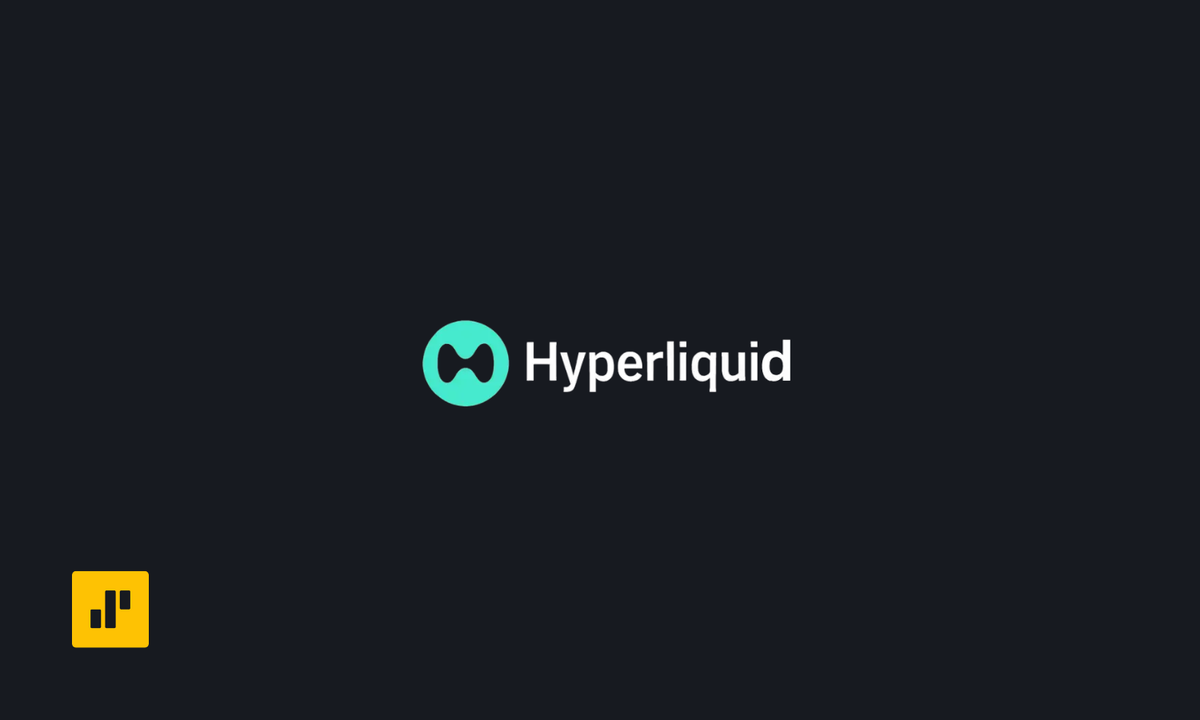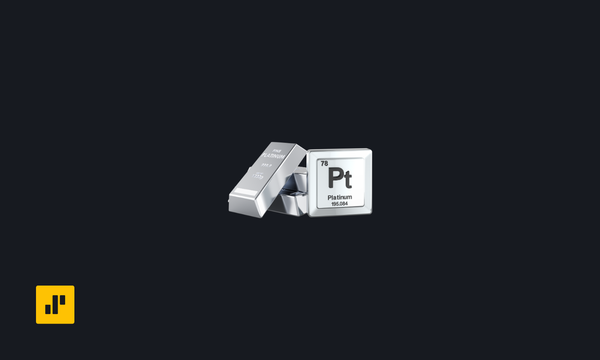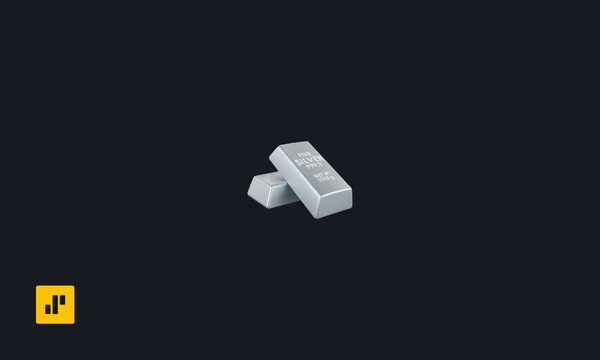Hyperliquid (HYPE) Research Report

Here's an up to date research report on Hyperliquid (HYPE) provided by Caesar.xyz:
Overview
Hyperliquid is a high-performance Layer-1 blockchain featuring a fully on-chain order book for perpetual and spot trading as its flagship application[1]. Designed to merge the speed and user experience of centralized exchanges (CEXs) with the transparency and security of decentralized finance (DeFi), the protocol has achieved a dominant position in the decentralized perpetuals market, capturing over 80% of the market share in 2025[2][3]. This dominance is built on a custom technology stack that includes the HyperBFT consensus mechanism and a unique dual-component architecture, enabling transaction throughput of up to 200,000 orders per second with sub-second finality[1][4]. The protocol's native token, HYPE, is integral to its ecosystem, providing utility in governance, staking for network security, and transaction fees, while being subject to a deflationary buyback-and-burn mechanism funded by platform revenue[5][6].
https://app.hyperliquid.xyz/join/SISTINE
Core Technology and Architecture
Hyperliquid is built on a proprietary Layer-1 blockchain designed from the ground up to support high-frequency financial applications[4][7]. This foundation allows the protocol to operate a fully on-chain central limit order book (CLOB), where every order, cancellation, trade, and liquidation is recorded transparently in the blockchain's consensus state[1][8]. This approach eliminates the centralization risks associated with off-chain matching engines used by many other decentralized exchanges (DEXs), such as censorship or front-running by a privileged operator[9].
HyperBFT Consensus and Performance
At the core of the blockchain is HyperBFT, a custom consensus algorithm inspired by HotStuff and its successors[1]. The development team implemented HyperBFT in Rust after finding the Cosmos system's default Tendermint algorithm insufficient for its performance goals; where Tendermint could handle up to 20,000 orders per second, HyperBFT has a theoretical capacity of up to 2 million orders per second[10].
This architecture delivers high performance on the mainnet[11]:
- Throughput: The chain currently supports between 100,000 and 200,000 orders per second[12][4].
- Latency: Achieves sub-second block finality, with a median end-to-end latency of approximately 0.2 seconds and a 99th percentile latency of 0.9 seconds[7][8].
On-Chain Order Book
Hyperliquid's order book operates on a strict price-time priority matching system: orders with the best price execute first, and among those with equal prices, the oldest order fills first[13][8]. A novel feature of its microstructure is the prioritization of certain order types; for example, cancellation orders are given precedence over market orders during block construction[13][14]. This gives market makers a slight advantage in updating their quotes, protecting them from toxic flow and high-frequency trading (HFT) manipulation[13][14]. The platform supports a wide array of order types, including market, limit, stop, scaled, and TWAP orders, all handled by the on-chain matching engine[8].
Unified State Architecture: HyperCore and HyperEVM
Hyperliquid's architecture is split into two primary components that share a unified state, allowing for seamless and atomic interactions without the need for bridges or trusted intermediaries[11][15].
- HyperCore: The native execution layer, written in Rust, which manages the protocol's core financial primitives[4]. This includes the on-chain order books for perpetual futures and spot markets, the matching engine, liquidations, risk management, and native oracles[11][14].
- HyperEVM: An EVM-compatible layer that provides a general-purpose smart contract platform[4]. This allows developers to deploy decentralized applications that can read from and interact with the high-performance liquidity and financial primitives of HyperCore[10][11]. This dual-chain solution ensures that the slower processing speed of the EVM environment does not impede the performance of the core order book system[10].
Market Performance and Traction
Hyperliquid has demonstrated significant growth in 2025, establishing itself as the dominant platform for decentralized perpetuals trading[16].
Trading Volume
The platform has consistently set new records for trading volume.
- July 2025: Recorded a total trading volume of $319-$320 billion, a 47% increase from June’s $216 billion and the highest monthly figure for any DeFi derivatives exchange[17][18][19].
- August 2025: The platform reached a cumulative trading volume of over $151 billion as of mid-August[20]. It set a new 24-hour volume record of $29 billion on August 15, generating $7.7 million in daily fees[21][22]. On August 20, its 24-hour perpetuals volume was $16.34 billion[23].
Sign up to EdgeX with this link to earn bonus points.
https://pro.edgex.exchange/referral/SISTINE
Total Value Locked (TVL)
Data regarding Hyperliquid's TVL in August 2025 shows significant variation across different data aggregators and reporting methodologies, indicating high volatility or inconsistent tracking.
- Figures reported in August 2025 have ranged from approximately $610 million to a new all-time high of $4.61 billion[24][25]. Other reported figures during the month include $651 million (DeFiLlama)[26], $2.26 billion in the liquid staking ecosystem[27], $2.81 billion[28], and peaks over $6 billion.
- For historical context, the platform's TVL stood at $3.5 billion at the end of June 2025[30].
User Adoption
The platform's user base has expanded alongside its trading volume.
- Total registered users grew from 488,000 in early June 2025 to over 604,400 by the end of July 2025[17].
- As of August 21, 2025, the total number of users reached 629,994[31].
Market Share
Hyperliquid has cemented its leadership in the decentralized perpetuals sector.
- In Q2 2025, the protocol commanded a 72.7% market share of all perpetual DEX trading volume[32].
- By August 2025, its market share had climbed to over 80%, while former leaders dYdX and GMX saw their respective shares fall to less than 2% each[16]. This represents significant growth from its 30% market share in November 2024[33].
HYPE Tokenomics
The native token of the Hyperliquid protocol is HYPE, which has a maximum supply of 1 billion tokens[5][34].
Token Allocation and Distribution
The token distribution model is designed to be community-centric, with over 70% of the total supply allocated to community-related initiatives and no allocation to venture capital or outside investors[35][36].
The official allocation is as follows[5][37]:
- Future Emissions & Community Rewards: 38.888%
- Genesis Distribution: 31.0% (Airdropped to ~100,000 early users in November 2024)
- Core Contributors: 23.8%
- Hyper Foundation Budget: 6.0%
- Community Grants: 0.3%
- HIP-2 Allocation: 0.012%
Tokens allocated to core contributors are subject to a one-year lock followed by a two-year monthly vesting schedule, with full release expected by 2027–2028[5]. The next scheduled token unlock is on November 29, 2025, for 216,580 HYPE tokens, representing 0.02% of the total supply[34].
Token Utility
The HYPE token is deeply integrated into the protocol and serves multiple functions[35]:
- Governance: HYPE holders can participate in governance by voting on protocol upgrades and key decisions[5][38].
- Staking and Network Security: As the native token of a Proof-of-Stake L1, HYPE is staked by validators to secure the network. Stakers can earn rewards with an APY of up to 55%[34][37].
- Transaction Fees: HYPE is used to pay for transaction fees on the L1 and gas fees on the HyperEVM[5][39].
- Ecosystem Incentives: The token is used for trading fee discounts, participation in ecosystem vaults, and as a security bond for creating new perpetual markets under HIP-3[6][40][41].
Deflationary Mechanism
Hyperliquid employs an aggressive deflationary model to link token value directly to platform activity[6].
- Buyback and Burn: Between 93% and 97% of protocol trading fees are used to buy back HYPE tokens, which are then burned[42][6][43].
- Other Burn Sources: Fees generated from spot trading, HyperEVM gas fees, and ticker auctions are also used to burn HYPE[44][45].
- Total Tokens Burned: As of August 2025, a total of 452,213.66 HYPE tokens have been permanently removed from circulation, with 367,705.45 burned from HyperCore and 84,508.21 from HyperEVM[46].
Governance Model
Hyperliquid's governance is evolving, combining elements of core team review, community proposals, and on-chain validator voting. HYPE token holders are empowered with governance rights to influence the protocol's direction[47].
Hyperliquid Improvement Proposals (HIPs)
The primary mechanism for protocol upgrades is the Hyperliquid Improvement Proposal (HIP) system[41]. Three key proposals have defined the platform's strategic expansion:
- HIP-1: Established a governance-driven process for listing new spot assets, requiring communities to bid with HYPE tokens[41].
- HIP-2: Introduced "Hyperliquidity," a protocol-native liquidity engine that functions like an AMM to bootstrap liquidity for new spot markets on the order book[41][48].
- HIP-3: Enables the permissionless creation of perpetual markets. A deployer must post a 1 million HYPE security bond, which grants them control over market design (oracles, fees, leverage) and allows them to earn up to 50% of the trading fees[41][49].
The formal process for HIPs appears to be less structured than a typical DAO. One source states that proposals are reviewed by core builders based on technical merit and deployed natively without a formal DAO vote[50]. However, the protocol also supports on-chain validator voting for certain actions, such as delisting assets, suggesting a hybrid governance model[51].
Validator Set and Decentralization
The security and governance of the L1 are managed by a set of validators.
- Set Size: As of June 2025, the active validator set consists of 21 nodes, an increase from 16 previously and just 4 in its earlier stages[52][53][54]. The active set is determined by the top 21 validators by total delegated stake[55]. Five of these validators are operated by the Hyperliquid Foundation[52].
- Requirements: To become a validator, an entity must stake a minimum of 10,000 HYPE, run two non-validator nodes with at least 95% uptime, and undergo KYC/KYB procedures[52][53]. These requirements, particularly the capital stake and KYC, have led to Hyperliquid being described as a more permissioned protocol, with its relatively small validator set drawing criticism regarding centralization[52][56].
Security Analysis
Hyperliquid's security posture has been evaluated through third-party audits and tested by real-world incidents.
Audits
The protocol has engaged with multiple security firms for audits.
- Zellic: Conducted two audits in August and November 2023[57]. These audits reportedly covered the Arbitrum bridge, staking logic, and execution engine[58]. One of Zellic's findings included a vulnerability related to signature reuse, which was subsequently fixed[59].
- DeFiSafety Report: A report from DeFiSafety assigned the protocol a 0% audit score, contending that the two Zellic audits were brief (two days each) and focused exclusively on the Arbitrum bridge, leaving the core L1 and DEX software unaudited[60]. This highlights a potential gap in the public security verification of the protocol's foundational layers.
- Ecosystem Audits: Numerous projects building on HyperEVM have undergone security reviews from firms including Pashov Audit Group, Ackee Blockchain Security, and Code4rena, indicating a growing security practice within the broader ecosystem[61][62][63].
Security Incidents and Vulnerabilities
Hyperliquid has faced several security challenges and incidents:
- The $JELLY Incident (March 2025): An attacker manipulated the price of an illiquid token, $JELLY, by over 400% to create a large, underwater short position[64]. The position was too large for the order book to liquidate and was inherited by the Hyperliquid Liquidity Provider (HLP) vault, placing its $230 million in assets at risk of a $12 million loss[64][65]. To prevent losses, validators intervened to delist the token and settle positions at a pre-manipulation price, an action that highlighted the platform's capacity for centralized control[64]. The team has since implemented measures to prevent reoccurrence, such as segmenting the liquidator vault and dynamically adjusting open interest caps[65].
- North Korean Hacker Concerns (Late 2024): Security researchers identified wallets linked to North Korean state-sponsored hackers trading on Hyperliquid, sparking fears that the platform was being probed for vulnerabilities[66][67]. While the trading resulted in losses for the flagged accounts, the incident drew attention to the security risks of the protocol's then-four-validator set, which could have been compromised with control of just three nodes[68]. The Hyperliquid team stated that no protocol vulnerabilities were exploited and funds remained secure[68].
- API Outage (July 2025): The platform experienced over 30 minutes of trading downtime on July 29, 2025. The team attributed the outage to an API server failure caused by a significant spike in traffic, not a hack or exploit[69].
User Incentive Programs
Hyperliquid has utilized several programs to incentivize user participation and liquidity.
Points Program
The primary incentive mechanism has been a multi-season points program designed to reward users for contributing to the protocol's growth[70].
- Structure: The program began on November 1, 2023, initially distributing 1 million points weekly[70]. A later "L1 phase" starting in May 2024 distributed 700,000 points weekly[70]. Distributions occur weekly on Thursdays based on activity ending Wednesdays at 00:00 UTC[70].
- Calculation Formula: The precise formula for calculating points is not publicly disclosed and has been updated on a recurring basis[70][71]. User speculation suggests criteria include trading volume, deposits, asset holdings, and liquidity provision, while manipulative activities like wash trading are penalized[72].
- Bonuses and Multipliers: Users can earn additional points through various multipliers. For instance, trading certain low-cap pairs offered a 20% bonus, and maintaining a maker share of 1% or more on any pair added a permanent 1.25x multiplier[73]. Affiliates also earn 1 point for every 4 points generated by their referred users[70].
Open Interest Rewards
An open interest rewards program was launched in July, distributing 40% of the net fees collected weekly to users[74]. A user's share of the rewards is determined by their average share of an asset's total open interest, creating an incentive to hold positions on less popular assets[74].
Project Roadmap (Late 2025 - 2026)
Hyperliquid's roadmap is focused on technical upgrades, ecosystem expansion, and further decentralization.
- CoreWriter Upgrade (Q3 2025): A highly anticipated upgrade that will enable dApps on HyperEVM to interact directly and natively with HyperCore's trading and liquidity primitives. This is expected to reduce latency, improve composability, and attract more developers to the ecosystem[75][76].
- HIP-3 Implementation (Q4 2025): The full implementation and governance vote on HIP-3, which will enable permissionless perpetual markets, is a key milestone. This aims to democratize asset listings and expand the range of tradable assets on the platform significantly[75][77].
- Ecosystem Growth (2025–2026): The platform anticipates continued growth in the number of DeFi protocols launching on HyperEVM, which has already seen over 10 new applications since March 2025. This includes deeper integrations with cross-chain infrastructure to enhance asset interoperability[75]. The roadmap also includes future network upgrades for general ERC20 native transfers to further unify the HyperCore and HyperEVM environments[34].
Citations
[1] https://assets.ctfassets.net/m1hizt3hapq0/xb3Vjz2Z7k1t0NTq71asF/0d86e25796ed2bd525a2b0048bf51766/Hyperliquid__The_HYPE_Begins.pdf
[2] https://www.datawallet.com/crypto/best-decentralized-perpetuals-exchanges
[3] https://www.aicoin.com/en/article/469756
[4] https://hyperliquid.gitbook.io/hyperliquid-docs
[5] https://www.kucoin.com/research/project-reports/hyperliquid-hype
[6] https://www.ainvest.com/news/hyperliquid-dominance-dex-perpetuals-high-yield-tokenomics-high-conviction-defi-investment-2025-2508/
[7] https://theshift.co/hyperliquid-the-emerging-defi-chain/
[8] https://medium.com/@gwrx2005/hyperliquid-on-chain-order-book-6df27cbce416
[9] https://www.luganodes.com/blog/hyperliquid-dex-deepdive/
[10] https://www.coinlive.com/news/hyperliquid-technical-interpretation-hyperevm-and-its-potential-problems
[11] https://oakresearch.io/en/reports/protocols/hyperliquid-hype-investment-thesis-the-house-of-finance
[12] https://www.youtube.com/watch?v=9SDUfkqEI24
[13] https://blog.mevx.io/hyperliquid/hyperliquid-order-book
[14] https://figment.io/insights/hyperliquid-first-look-the-complete-onchain-financial-stack/
[15] https://www.blockhead.co/2025/06/05/inside-hyperliquids-technical-architecture/
[16] https://www.ccn.com/news/crypto/hyperliquid-captures-defi-perps-market/
[17] https://en.cryptonomist.ch/2025/08/07/hyperliquid-shatters-defi-records-with-319-billion-in-volume/
[18] https://blocknews.com/hyperliquid-hits-new-all-time-high-in-monthly-trading-volume/
[19] https://quasa.io/media/hyperliquid-shatters-records-with-319-billion-trading-volume-in-july
[20] https://www.cryptopolitan.com/hyperliquid-asset-inflows-btc-all-time-high/
[21] https://coincentral.com/hyperliquid-hype-price-bulls-eye-90-breakout-as-tvl-hits-2-8-all-time-high/
[22] https://www.coinspeaker.com/hyperliquid-hits-29b-daily-volume-as-hype-price-nears-ath/
[23] https://x.com/OG_mhan/status/1958301282977890591
[24] https://x.com/AlphaByH179237/status/1956280877719130343
[25] https://x.com/HyperliquidNews/status/1958475434305212845
[26] https://defillama.com/protocol/hyperliquid
[27] https://www.coindesk.com/business/2025/08/19/valantis-acquires-sthype-expanding-liquid-staking-reach-on-hyperliquid
[28] https://blockonomi.com/hyperliquid-hype-price-whale-adds-466000-tokens-worth-21-5m-as-tvl-reaches-2-81b/
[30] https://www.binance.com/en-IN/square/post/28475999246162
[31] https://x.com/OG_mhan/status/1958318204281094556
[32] https://www.cryptotimes.io/2025/07/18/perpetual-dex-volume-hit-record-high-898-billion-in-q2-2025-coingecko/
[33] https://launchy.app/insights/state-of-perp-dex-2025
[34] https://www.flitpay.com/blog/hyperliquid-hype-price-prediction
[35] https://medium.com/nonce-classic/hyperliquid-tokenomics-a-fundamentals-driven-deep-dive-52dd57f5705c
[36] https://insights.unlocks.app/hyperliquid-tge-and-the-potential-rising-narrative-of-decentralized-perpetual-protocols/
[37] https://www.solulab.com/hyperliquid-hype-token-guide/
[38] https://www.ccn.com/education/crypto/hyperliquid-exchange-hype-guide/
[39] https://www.linkedin.com/pulse/hyperliquid-token-hype-deep-dive-use-cases-utility-whats-next-d71mc
[40] https://99bitcoins.com/cryptocurrency/hyperliquid-review/
[41] https://www.dwf-labs.com/research/hyperliquid-earns-more-on-chain-revenue-than-ethereum-will-the-hype-price-go-further-up
[42] https://yellow.com/news/hyperliquid-sets-record-dollar29b-trading-volume-as-hype-token-surges-to-near-all-time-high-of-dollar49
[43] https://x.com/EpicOne22/status/1956675393114538057
[44] https://newsletter.asxn.xyz/p/the-hyperliquid-issue-4
[45] https://x.com/reisnertobias/status/1958466242588643698
[46] https://www.hypeburn.fun/
[47] https://trustwallet.com/blog/guides/beginners-guide-to-hyperliquid
[48] https://hyperliquid.gitbook.io/hyperliquid-docs/hyperliquid-improvement-proposals-hips/hip-2-hyperliquidity
[49] https://x.com/HyperliquidX/status/1918181439537025485
[50] https://hyperpc.app/blog/hyperliquid-improvement-proposals
[51] https://www.mexc.com/hu-HU/news/pa-daily-nasdaq-submits-grayscale-avalanche-etf-application-to-the-us-sec-trump-pardons-three-co-founders-of-bitmex/181
[52] https://www.fedorborovykh.com/hyperliquid-project-analysis/
[53] https://www.cryptotimes.io/2025/04/22/hyper-foundation-introduces-21-validator-nodes-for-security/
[54] https://www.panewslab.com/en/articles/efv0z8lx
[55] https://hyperliquid.gitbook.io/hyperliquid-docs/validators/running-a-validator
[56] http://pdf.secdatabase.com/120/0000894189-25-005036.pdf
[57] https://skynet.certik.com/projects/hyperliquid
[58] https://medium.com/@uncoilhype/hyperliquid-l1-execution-first-infrastructure-for-the-next-phase-of-defi-6ff9c90518e3
[59] https://medium.com/@gwrx2005/cross-chain-transfer-mechanism-in-hyperliquid-architecture-and-proxy-design-b3179e636ec7
[60] https://defisafety.com/app/pqrs/610
[61] https://x.com/PashovAuditGrp/status/1938264525351874926
[62] https://ackee.xyz/blog/hyperlend-protocol-audit-summary/
[63] https://x.com/kinetiq_xyz/status/1908199891492610196
[64] https://www.halborn.com/blog/post/explained-the-hyperliquid-hack-march-2025
[65] https://oakresearch.io/en/analyses/investigations/hyperliquid-jelly-attack-context-vulnerability-team-solution
[66] https://www.ccn.com/education/crypto/why-validators-fail-lessons-for-defi-ecosystem/
[67] https://www.dlnews.com/articles/defi/hyperliquid-denies-hack-after-investors-suffer-hlp-loss/
[68] https://www.ccn.com/news/crypto/hyperliquid-risk-north-korean-hackers-trade-platform/
[69] https://www.theblock.co/post/364798/hyperliquid-outage-api-traffic-spike-not-hack-vulnerability-exploit
[70] https://hyperliquid.gitbook.io/hyperliquid-docs/points
[71] https://www.binance.com/en/square/post/19853199753401
[72] https://www.panewslab.com/en/articles/zena4u1n
[73] https://medium.com/@gracesandquist1975/from-trades-to-hype-hyperliquid-points-program-8e2620b68d47
[74] https://hyperliquid.medium.com/hyperliquid-q3-update-1fd4702975a9
[75] https://coinmarketcap.com/cmc-ai/hyperliquid/latest-updates/
[76] https://www.ainvest.com/news/hyperliquid-anticipates-300-volume-surge-2025-driven-corewriter-launch-bitcoin-bull-market-2507/
[77] https://coinfomania.com/hyperliquid-predictions-2025/





